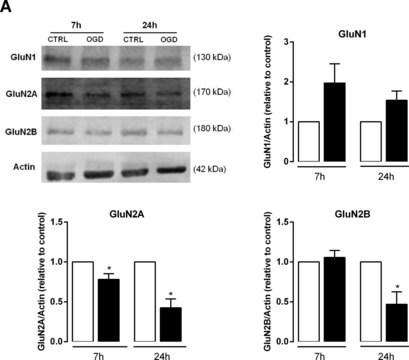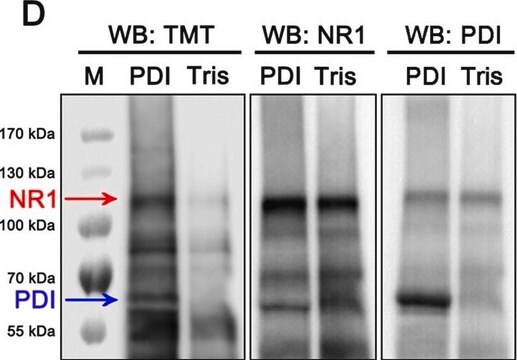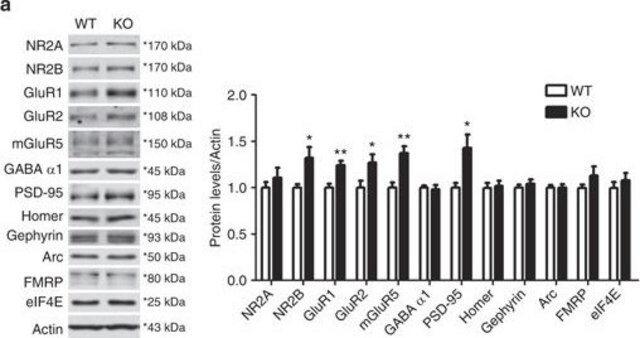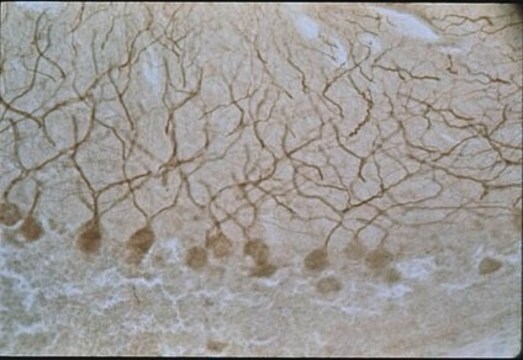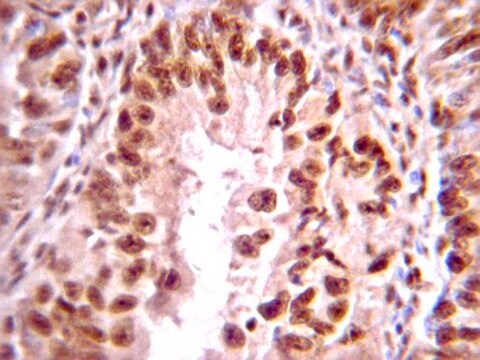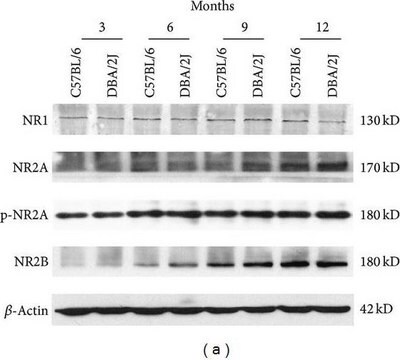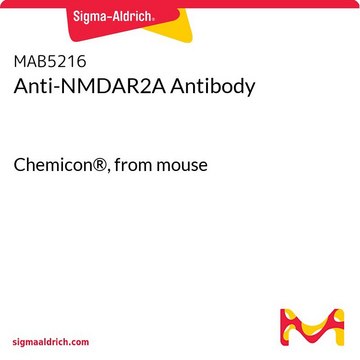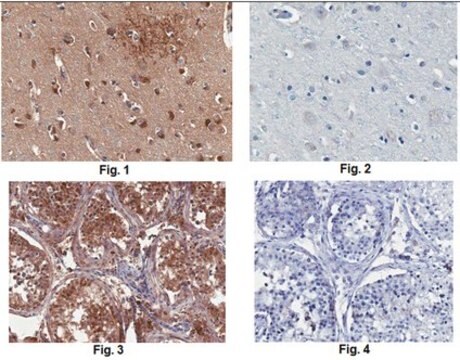AB1548
Anti-NMDAR2A&B Antibody, pan
Chemicon®, from rabbit
About This Item
IHC (p)
IP
WB
immunohistochemistry (formalin-fixed, paraffin-embedded sections): suitable
immunoprecipitation (IP): suitable
western blot: suitable
Recommended Products
biological source
rabbit
Quality Level
antibody form
affinity isolated antibody
antibody product type
primary antibodies
clone
polyclonal
purified by
affinity chromatography
species reactivity
mouse, guinea pig, rat, human, rabbit, avian
manufacturer/tradename
Chemicon®
technique(s)
immunocytochemistry: suitable
immunohistochemistry (formalin-fixed, paraffin-embedded sections): suitable
immunoprecipitation (IP): suitable
western blot: suitable
NCBI accession no.
shipped in
wet ice
target post-translational modification
unmodified
Gene Information
human ... GRIN2A(2903)
Specificity
Immunogen
Application
Neuroscience
Neurotransmitters & Receptors
The antibody can be used for immunopreciptation of detergent solubilized receptor from brain or transfected cells. For most cases 5 μg of antibody is used with immobilized Protein A.
Optimal working dilutions must be determined by end user.
Physical form
Note: lot 0509010940 was shipped in liquid format; Do NOT add additional water to this lot of material.
Storage and Stability
Legal Information
Disclaimer
Not finding the right product?
Try our Product Selector Tool.
Storage Class Code
10 - Combustible liquids
Certificates of Analysis (COA)
Search for Certificates of Analysis (COA) by entering the products Lot/Batch Number. Lot and Batch Numbers can be found on a product’s label following the words ‘Lot’ or ‘Batch’.
Already Own This Product?
Find documentation for the products that you have recently purchased in the Document Library.
Our team of scientists has experience in all areas of research including Life Science, Material Science, Chemical Synthesis, Chromatography, Analytical and many others.
Contact Technical Service